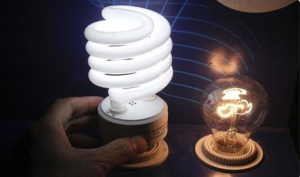Why do more and more people like to use LED lights instead of incandescent lights?
Here are some comparisons, maybe it can help us find the answer.
The first difference between incandescent lamps and LED lamps is the light-emitting principle. The incandescent lamp is also called an electric bulb. Its working principle is that heat is generated when the current passes through the filament. The spiral filament continuously collects the heat, making the temperature of the filament more than 2000 degrees Celsius. When the filament is in an incandescent state, it looks like red iron. It can emit light just as it shines.
The higher the temperature of the filament, the brighter the light, so it is called an incandescent lamp. When incandescent lamps emit light, a large amount of electrical energy will be converted into heat energy, and only a very small part can be converted into useful light energy.
LED lights are also called light-emitting diodes, which are solid-state semiconductor devices that can directly convert electricity into light. The heart of the LED is a semiconductor chip, one end of the chip is attached to a bracket, one end is the negative pole, and the other end is connected to the positive pole of the power supply, so that the entire chip is encapsulated by epoxy resin.
The semiconductor wafer is composed of three parts, one part is a P-type semiconductor, in which holes dominate, the other end is an N-type semiconductor, here are mainly electrons, and the middle is usually a quantum well with 1 to 5 cycles. When the current acts on the chip through the wire, the electrons and holes will be pushed into the quantum wells. In the quantum wells, the electrons and holes recombine and then emit energy in the form of photons. This is the principle of LED light emission.
The second difference lies in the heat radiation produced by the two. The heat of the incandescent lamp can be felt in a short time. The greater the power, the more the heat. Part of the conversion of electrical energy is light and part of the heat. People can clearly feel the heat emitted by the incandescent lamp when they are very close. .
LED electric energy is converted into light energy, and the heat radiation generated is very little. Most of the ability is directly converted into light energy. Moreover, the power of general lamps is low. Coupled with the heat dissipation structure, the heat radiation of LED cold light sources is better than that of incandescent lamps.
The third difference is that the lights emitted by the two are different. The light emitted by the incandescent lamp is full-color light, but the composition ratio of the various color lights is determined by the luminescent substance and temperature. The unbalanced ratio causes the color cast of the light, so the color of the object under the incandescent lamp is not real enough.
LED is a green light source. The LED lamp is driven by DC, no stroboscopic, no infrared and ultraviolet components, no radiation pollution, relatively high color rendering and strong luminous directivity.
Not only that, the LED light has good dimming performance, no visual error occurs when the color temperature changes, and the cold light source has low heat generation and can be safely touched. It can provide a comfortable lighting space and a good It is a healthy light source that protects eyesight and is environmentally friendly to meet people’s physiological health needs.
Post time: Feb-03-2021

